
Transactional analysis in organisations: A case study with a focus on internal communication
- Social Work and Arts
Research output : Thesis › Doctoral Thesis
Fingerprint
- Case Study Social Sciences 100%
- Internal Communication Computer Science 100%
- Transactional Analysis Keyphrases 100%
- Administrative Structure Social Sciences 75%
- Personnel Social Sciences 75%
- Organizational Aspect Computer Science 71%
- Organization Studies Social Sciences 50%
- Organizational Structure Computer Science 42%
T1 - Transactional analysis in organisations
T2 - A case study with a focus on internal communication
AU - Wuersch, Lucia
N2 - Internal communication, embracing both technical and human organisational aspects, is an important function for organisational success. Transactional Analysis (TA) is an analytical framework for individual and social psychiatry used in an organisational context (TA-O) for personal and group development. This study explored TA's impacts on internal communication in a single case study of a Swiss public organisation with the mission to help jobseekers reintegrate into the workforce through counselling. Preliminary fieldwork uncovered the long-term adoption of TA principles in the organisation’s strategic policy, internal training, and workplace practices. The study was designed as three complementary ethnographic fieldwork projects.The first project focused on strategists' and TA experts’ understanding of TA’s contributions to the organisation’s strategic aims. Interviews with executives and TA experts revealed six 'strategic contributions' of TA. Thus, the strategic organisational contributions of TA as a relational approach for strengthening internal communication in the case study organisation are both human (i.e., people’s skills and attitudes, relationships, leadership, communication, collaboration and interaction) and technical (i.e., efficient and effective organisational structures); elements which lead to the implicit strategic aim of organisational sustainability. This combination helps the organisation because it stimulates employee motivation, wellbeing, and performance.The second project investigated leaders' and employees’ perceptions of the influence of TA in their work experiences. The interviews elicited participants’ stories. As a result, eight 'work experiences' emerged emphasising the dimension of self. In the case study organisation TA helped staff’s ability to engage in self-reflection constructively, more effectively manage their emotions, and be more collaborative and tolerant. TA supported staff to experience greater job satisfaction, build meaningful internal relationships, create a more positive working climate and team spirit, and resulted in a common culture in which TA’s humanistic values based on I’m OK/You’re OK are embedded.The third project explored TA’s contribution to the understanding of self and internal communication. Reflexive writing using analytic autoethnography allowed the researcher, as a full participant in the organisation’s TA training programs, to explore the cultural understanding of applying TA principles in the specific organisational setting. This experience ultimately transformed the researcher’s capability of ‘trusting self and others’. Thus, the thesis explains TA as a relational tool that may foster internal communication through strengthening trust in self, between staff and within the organisation.In conclusion, the three projects brought to light the human organisational aspects (e.g., skills and attitudes) and technical organisational aspects (e.g., structures) as areas of ‘win-win’ that showed TA to be beneficial. Examples demonstrated an interplay between both aspects: TA trained people engaged in improving organisational structures (technical organisational aspects); and complementarily, enhanced organisational structures supported TA training and the development of employees’ skills and attitudes (human organisational aspects). The essence of TA that improves organisational communication was shown to be the basic TA principle of I’m OK/You’re OK—that is, skills and desire to accept the other as a human being. Furthermore, TA was found to impact on all internal communication levels: participants experienced self-development at the intrapersonal level, which strengthened collaboration at the interpersonal and group level, and fostered a common understanding at the organisational level.
AB - Internal communication, embracing both technical and human organisational aspects, is an important function for organisational success. Transactional Analysis (TA) is an analytical framework for individual and social psychiatry used in an organisational context (TA-O) for personal and group development. This study explored TA's impacts on internal communication in a single case study of a Swiss public organisation with the mission to help jobseekers reintegrate into the workforce through counselling. Preliminary fieldwork uncovered the long-term adoption of TA principles in the organisation’s strategic policy, internal training, and workplace practices. The study was designed as three complementary ethnographic fieldwork projects.The first project focused on strategists' and TA experts’ understanding of TA’s contributions to the organisation’s strategic aims. Interviews with executives and TA experts revealed six 'strategic contributions' of TA. Thus, the strategic organisational contributions of TA as a relational approach for strengthening internal communication in the case study organisation are both human (i.e., people’s skills and attitudes, relationships, leadership, communication, collaboration and interaction) and technical (i.e., efficient and effective organisational structures); elements which lead to the implicit strategic aim of organisational sustainability. This combination helps the organisation because it stimulates employee motivation, wellbeing, and performance.The second project investigated leaders' and employees’ perceptions of the influence of TA in their work experiences. The interviews elicited participants’ stories. As a result, eight 'work experiences' emerged emphasising the dimension of self. In the case study organisation TA helped staff’s ability to engage in self-reflection constructively, more effectively manage their emotions, and be more collaborative and tolerant. TA supported staff to experience greater job satisfaction, build meaningful internal relationships, create a more positive working climate and team spirit, and resulted in a common culture in which TA’s humanistic values based on I’m OK/You’re OK are embedded.The third project explored TA’s contribution to the understanding of self and internal communication. Reflexive writing using analytic autoethnography allowed the researcher, as a full participant in the organisation’s TA training programs, to explore the cultural understanding of applying TA principles in the specific organisational setting. This experience ultimately transformed the researcher’s capability of ‘trusting self and others’. Thus, the thesis explains TA as a relational tool that may foster internal communication through strengthening trust in self, between staff and within the organisation.In conclusion, the three projects brought to light the human organisational aspects (e.g., skills and attitudes) and technical organisational aspects (e.g., structures) as areas of ‘win-win’ that showed TA to be beneficial. Examples demonstrated an interplay between both aspects: TA trained people engaged in improving organisational structures (technical organisational aspects); and complementarily, enhanced organisational structures supported TA training and the development of employees’ skills and attitudes (human organisational aspects). The essence of TA that improves organisational communication was shown to be the basic TA principle of I’m OK/You’re OK—that is, skills and desire to accept the other as a human being. Furthermore, TA was found to impact on all internal communication levels: participants experienced self-development at the intrapersonal level, which strengthened collaboration at the interpersonal and group level, and fostered a common understanding at the organisational level.
KW - Internal communication
KW - Transactional Analysis
KW - Autoethnography
M3 - Doctoral Thesis
PB - Charles Sturt University
CY - Australia

Submit your details to get your report
Dummy Text. Aristotle (384–322 B.C.E.) numbers among the greatest philosophers.
Email Address
Remember me

Subscribe to our newsletter.
Transactional analysis (ta): overview, examples, and effectiveness, thc editorial team february 27, 2022.

In this article
What Is Transactional Analysis?
The history of transactional analysis, transactional analysis and ego states, how does transactional analysis therapy work, when is transactional analysis commonly used, the potential benefits and effectiveness of transactional analysis, summary/key takeaways.
Transactional analysis (TA) is a theory informing a type of psychotherapy that psychologists use to facilitate growth and prosocial change in clients. TA can help people develop better self-awareness , communication skills, and improve how they relate to others. Practitioners use ideas from several modalities, including psychodynamic, behavioral, and Gestalt theories . 1
Transactional analysis is a psychological theory that focuses on how people interact with others, including the therapist, to demonstrate their ego states and the types of games and scripts they engage in within social settings. 2 Games are patterns of social behavior that operate on an acknowledged social level and an unacknowledged psychological level and leave the participants of the interaction with inauthentic feelings. Scripts represent life patterns that people develop unconsciously based on decisions they made in early childhood. 1
Ego states are systems of feelings that motivate sets of behavioral patterns. TA classifies interpersonal communication as falling into one of three ego states. 1 The system of here-and-now emotional analysis, or neopsyche, is termed the Adult ; the system of introjected psychic material, or exteropsyche, is called the Parent ; and the system of instinctual drives and basic needs is the Child . 3
The therapist identifies which of the client’s ego states is present in a particular transaction. The therapist will examine a transaction, identify the ego states present, pinpoint the games or patterns the client typically uses in their transactions with others, and perform a script analysis with the client of their unconscious patterns to discover the causes of the client’s emotional challenges. 2
Key assumptions that underlie TA include the following: 3
- People are Okay.
- Everyone has the capacity to think on their own.
- People decide their own destiny and these decisions can be changed.
Transactional analysis was developed by Eric Berne, a Canadian psychiatrist and psychoanalyst, during the 1960s. Berne referred to the basic unit of social interaction as a transaction. TA refers to the study of how individuals interact in social situations. Berne was influenced by empiricism, phenomenology, existentialism , and humanism. 3
Berne drew from Freud’s theory that the human psyche includes several components that interact to produce complex behaviors, beliefs, and emotions . He used his background as a psychoanalyst to build upon Freud’s philosophical concepts and developed the observable ego states of Child, Parent, and Adult, drawing from Freud’s concepts of the id, ego, and superego. 1, 4 Although Berne’s ego states do not directly correspond to Freud’s concepts, Berne believed that people assume these roles in certain contexts. 2
Berne also noted that human communication is complex and emphasized that nonverbal communication—gestures, vocal tone, eye contact, speech rhythms, body posture, and facial expressions—is as important and valid a method of communication as verbal communication. 1 He believed that dysfunctional behavior occurs because of decisions people make during childhood that limit their social functioning in adulthood. These childhood decisions lead unconsciously to the creation of the life script, which governs how people subsequently live their lives. 1
A transactional stimulus refers to an interaction that a person initiates, usually verbally but sometimes using nonverbal cues. The other person’s reaction and reply is called a transactional response . 1 Berne worked to identify the ego state from which clients interact with others to help them access their life scripts, understand how they developed their worldview, and make changes as needed. 5
The core principle of TA is splitting the ego into three separate states. The three ego states correspond to people’s internal Parent, Child, and Adult models.
Parent Ego State
The Parent ego state is related to parental figures in a person’s life. It deals with behaviors, thoughts, and feeling patterns of introjected parental figures, people for whom a person has unconsciously created an internal representation. Introjection is caused by early childhood experiences in which the child sees the parent as powerful or threatening. Rather than being an experience of the self, like the Child and Adult ego states, the Parent ego state relates to the past experiences of parental figures. The Parent usually follows one of two paradigms when it manifests in transactions: it can be the Critical Parent, controlling, demanding, setting limits, and creating rules, or it can be the Nurturing Parent, supportive, caring, and protective. 1
Child Ego State
The Child ego state relates to experiences of the self from the past and retains the patterns of thinking, feeling, and behaving of childhood. This concept is represented in other psychological concepts as the “ inner child .” There are several different child ego states: 1
- Adapted Child : This Child ego state responds to Parent demands either compliantly or rebelliously, rather than to its own needs.
- Free or Natural Child : Unlike the adapted child, this ego state responds to its own needs and is spontaneous.
- Rebellious Child : This category of the adapted Child rebels against the Parent’s demands.
- Compliant Child : This category of the adapted Child reacts positively to the Parent’s demands.
- Somatic Child or early Child ego state : This ego state reflects a time in childhood when body issues were prominent. When disturbed, it can cause somatic disorders.
Adult Ego State
The Adult ego state is the predominant state that deals with and responds to the here-and-now, current reality. The Adult can be assertive, rational, and practical, and is rarely aggressive. It engages in reality testing, or ensuring that the world is the way it thinks it is. An analysis that reveals a steady speech rate, good diction, and relaxed expression can indicate the presence of the Adult. 1
Transactional analysis therapy helps clients strengthen and integrate their Adult ego states. The therapist first uses an intake interview to evaluate the client’s issues and willingness to change and grow through therapy. In TA therapy, the therapist must determine whether the client has enough available Adult ego state for change to occur. 1 TA also emphasizes the establishment of a therapist-client contract that details a client’s goals for treatment outcomes and provides a foundation from which the client can take responsibility for things that occur during treatment. 6 ,7
Berne highlighted observation as an important and necessary tool of TA therapy. He said that therapists should be present, focused, and intuitive. He believed that observation should involve that which the therapist can see and engage all the senses. 6
Four Stages of Transactional Analysis
Transactional analysis psychotherapy usually moves through four stages: 1
- The client is able to recognize and take control of their scripts and script behaviors, but the scripts still exist. They are able to manage and control their dysfunctional behaviors in social situations. The client achieves social control, the state in which the client’s control comes from the position of the Adult ego state.
- In the symptomatic relief stage , the client begins altering their Child and Parent and is less likely to devolve into their scripts.
- The client and therapist engage in the transference cure , where the client introjects the therapist as a replacement for their original parental figures.
- Finally, in the script cure , the client can move away from the script entirely and make fundamental changes in the Child, with the support of the Adult.
TA aims to create an integrated Adult ego state. This includes integrating the valuable parts of the Parent and Child ego states with the Adult ego states. The ethos of the integrated Adult draws values and patterns from the Parent, and the pathos includes the Child’s experience. 1
TA therapy also seeks to foster autonomy in the client. It defines autonomy as awareness , the knowledge that there are regressive parts, introjected parts, and here-and-now parts; spontaneity , the freedom to express their awareness; and intimacy , the capacity to be aware and spontaneous in the presence of others. 3
Transactional Analysis Techniques
Transactional analysis therapists use multiple techniques in their practices. During one of the most common TA techniques, script analysis, the therapist first identifies the ego states of their client in communication transactions and works with them to uncover their unconscious life scripts. The therapist explores the scripts their client developed in early childhood and helps them test the beliefs, attitudes, and emotions their scripts reinforce. 1
While analyzing the client’s script, the therapist explores the subtle messages that the client learned as a child, called injunctions. For example, if a child was given a negative attribution or told by their parent that they were stupid, they might have developed a “don’t think” injunction and learned that they should accept what others say rather than think for themselves. 1, 8 Once the subtle messages are identified, the therapist can work with the client to understand how they impact their interactions with others. Structural diagrams are commonly used as visual aids to help clients understand their three internal ego states and how they affect their social interactions and behavior. 1
Other techniques frequently employed in TA therapy include: 1
- Alliance : The therapist or a figure from the client’s past sides with the Child when confronting a persecuting Parent.
- Anger work : The therapist encourages the client to release their repressed anger.
- Cushion work : The client externalizes an introject or ego state onto a cushion so their internal processes can exist in the outer world.
- Guided fantasy : The client and therapist contact the client’s Child to elicit imagery depicting issues that the client is unable to talk about.
- Rechilding : The client regresses in age to form a new Child ego state with a positive experience.
- Sculpting : The client externalizes their unconscious thoughts and feelings onto a pattern in their environment representing their internal state, which allows the client and therapist to deal with the feelings symbolically.
Transactional analysis may be used in multiple settings, including schools or corporations, group or individual counseling sessions, and long- or short-term counseling. 6 In therapy, it is typically used with clients who struggle with forming and maintaining healthy relationships because of behaviors they learned as children. TA is also used to facilitate improved social communication and interactions within groups.
Transactional analysis is used in many different fields, in addition to psychotherapy, including business management, education, and medicine. It is considered a highly effective method to enhance self-awareness and the ability to relate to others.
Many studies have been conducted on the effectiveness of TA in treating people with different issues and ailments. For example, a 2021 study sought to determine the effect of TA on incarcerated people’s communication with their spouses. Researchers from Alzahra University in Tehran, Iran, recruited 22 couples, half of whom received 10 sessions of TA treatment. The researchers found that TA improved the communication between the participants and their partners and reduced their communication issues. 9
A 2011 study researching the effects of a transactional analysis-based leadership training program on thirty Romanian automotive managers and leaders found that managers who attended the training program exhibited statistically significant improvements in emotional stability and social boldness, but not warmth. 10
A 2020 study examined whether TA was an effective intervention for people in treatment for methadone addiction. The researchers from Isfahan University of Medical Sciences in Iran, selected 24 men from an outpatient addiction clinic and gave half of them 10 sessions of TA intervention. After collecting data from the Young Schema Questionnaire; the Inventory of Personal Problems; and the Stages of Change, Readiness, and Treatment Eagerness Scales, the researchers found that TA treatment positively influenced interpersonal problems and readiness for addiction treatment. 11
Several other studies have demonstrated the effectiveness of TA in improving the symptoms of anxiety and depression , reducing relationship issues, and increasing self-esteem. 12, 13 , 14
Transactional analysis is a widely-embraced and frequently used type of psychotherapy. It is a valuable resource for people who want to explore their ego states and unconscious life scripts to improve their communication skills and relationships. People willing to develop greater self-awareness and take responsibility for their decisions and actions may be suited to this therapeutic method.
- Tilney, T. (1998). Dictionary of transactional analysis. Whurr Publishers.
- Berne, E. (1996). Principles of transactional analysis. Indian Journal of Psychiatry, 38(3), 154–159.
- Hobbes, R., & Tudor, K. (2007). Transactional analysis. In W. Dryden (Ed.), Dryden’s handbook of individual therapy (5th ed., pp. 256–286). Sage.
- Segrist, D. J. (2009). What’s going on in your professor’s head? Demonstrating the id, ego, and superego. Teaching of Psychology, 36(1), 51–54. https://doi.org/10.1080/00986280802529285
- Stewart, T. T. (2011). Transactional analysis: Conceptualizing a framework for illuminating human experience. International Journal of Qualitative Methods, 10(3), 282–295. https://doi.org/10.1177/160940691101000307
- Grant, J. (2013). Short-term counseling and transactional analysis. Transactional Analysis Journal, 43(1), 58–67. https://doi.org/10.1177/0362153713486110
- Stewart, I. (2013). Transactional analysis counselling in action. Sage.
- Holtby, M. E. (1973). You become what I take you to be: R. D. Liang’s work on attributions as injunctions. Transactional Analysis Journal, 3(4), 25–28. https://doi.org/10.1177/036215377300300409
- Pourshahriari, M., Hashemi, S., Zarebi, A., Jafari, F., & Sharifi, G. (2021). The effectiveness of transactional analysis (TA) on couples communication patterns among prisoners and their wives, a randomized pilot efficacy trial. International Journal of Systemic Therapy, 1–14.
- Ciucur, D., & Pîrvuţ, A. F. (2012). The effects of a transactional analysis training programme on team leadership factors in automotive industry. Procedia-Social and Behavioral Sciences, 33, 667-671.
- Khalili, E., Kheirabadi, G., & Khodadadi, F. (2021). Effectiveness of transactional analysis intervention on treatment acceptance, primary maladaptive schema, and interpersonal problems in patients under methadone maintenance treatment. Journal of Substance Use, 27(1), 86–90. https://doi.org/10.1080/14659891.2021.1897697
- Widdowson, M. (2014). Transactional analysis for a case of mixed anxiety and depression: A pragmatic adjudicated case study – “Alastair.” International Journal of Transactional Analysis Research, 5(2), 66–76. https://doi.org/10.29044/v5i2p66
- Alkasir, M., Atadokht, A., Dehkordi, F. J., Mohammadkhani, P., & Sefat, E. S. (2017). Effectiveness of transactional analysis group training in reducing control-oriented behaviors of spouse in marital conflicts. Rehabilitation Journal, 15(1), 57–64. http://dx.doi.org/10.18869/nrip.irj.15.1.57
- Akbari, A., Azimi, Z., Khanjani, Z., Mahmoud Alilou, M., & Pour Sharifi, H. (2012). The effectiveness of transactional analysis therapy on personality states, self-esteem and clinical symptoms of people with emotional breakdown. Journal of Psychological Models and Methods, 2(8), 1–20. https://www.sid.ir/en/journal/ViewPaper.aspx?id=365273

Related Articles

Ego-State Therapy: An Overview
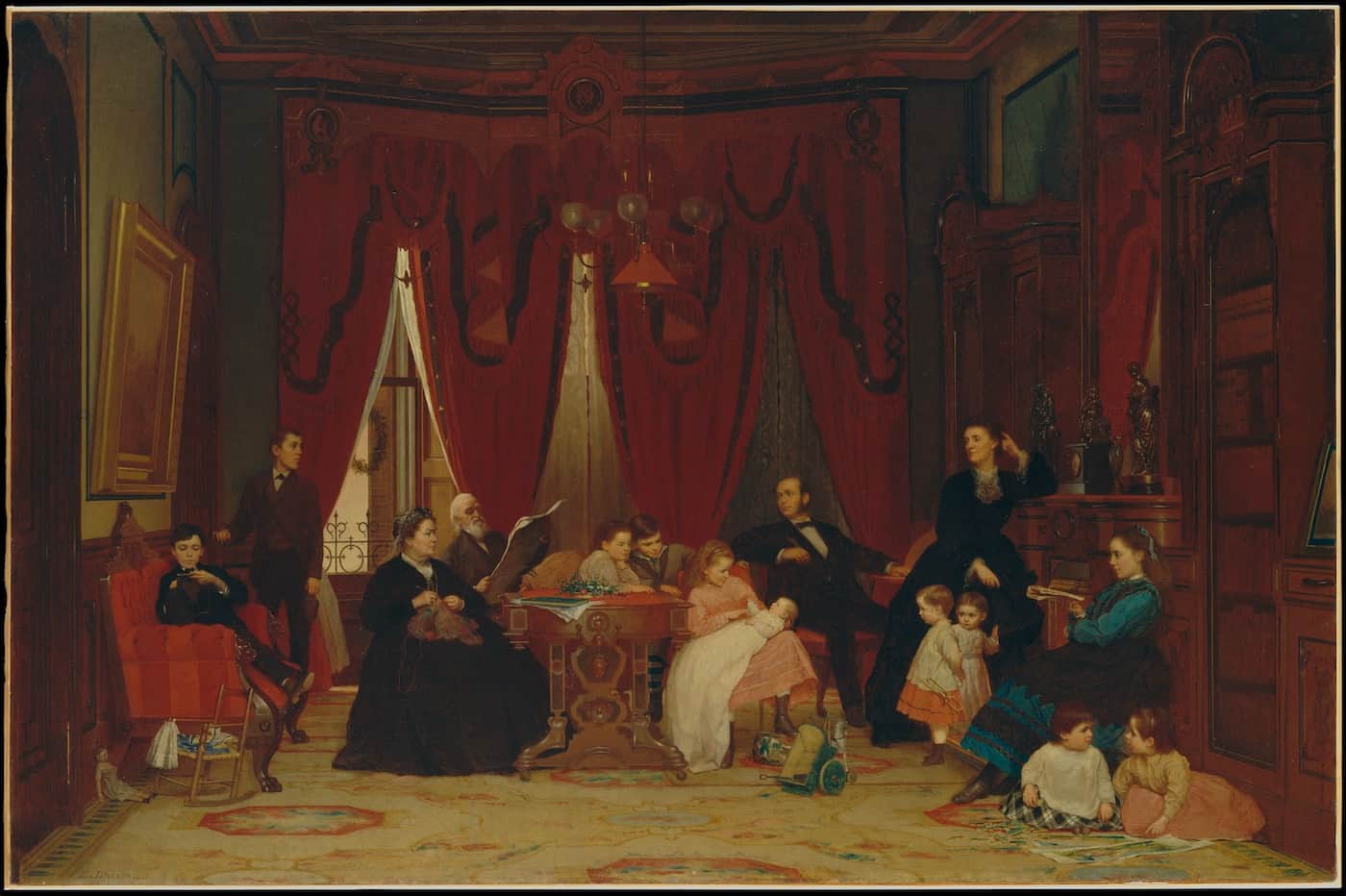
Internal Family Systems (IFS): What It Is, Background, and Benefits

Inner Child Quotes

Acceptance: Overview, Benefits, and Practice

Hakomi Therapy: Overview and Effectiveness
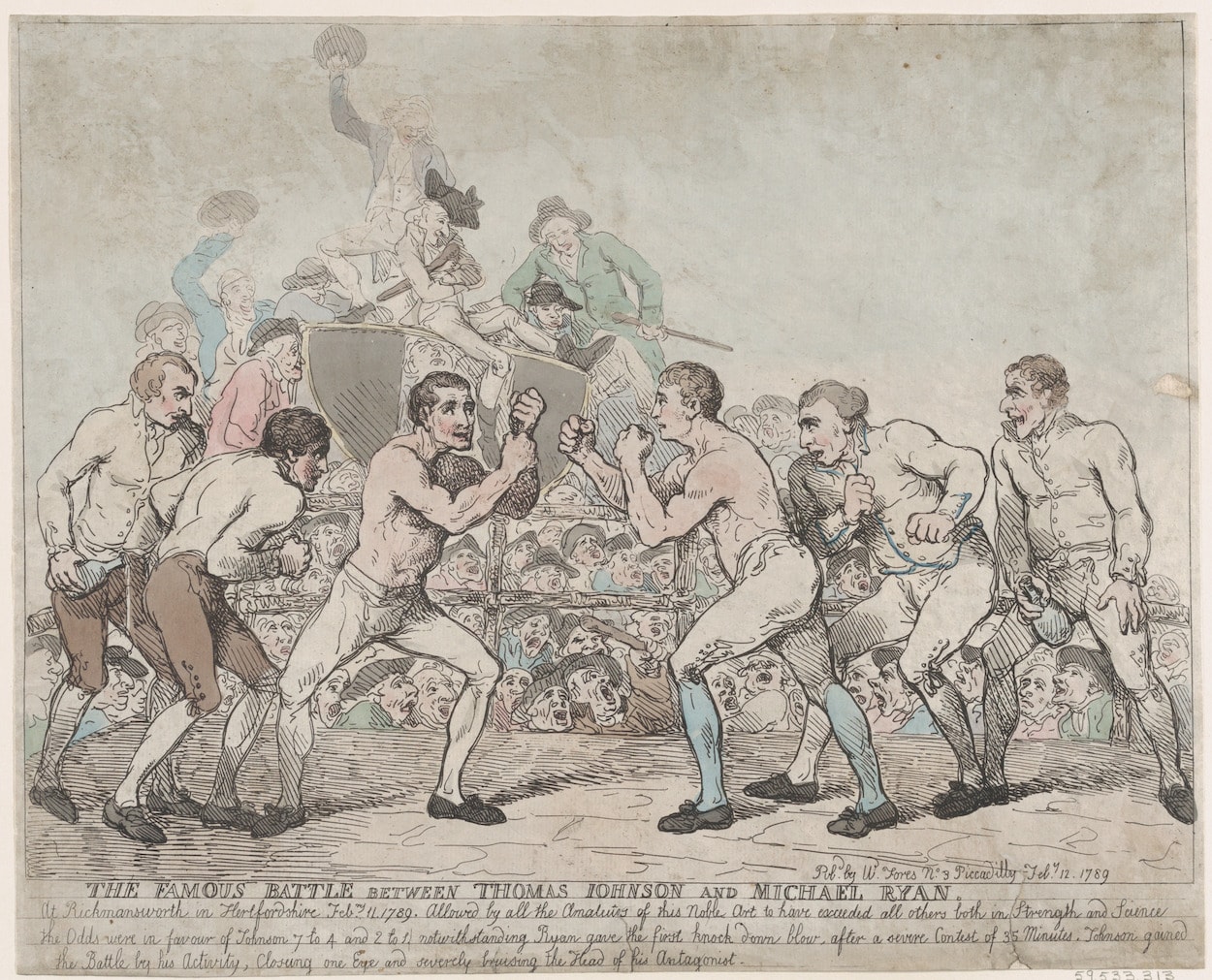
Somatic Therapy: Overview and Effectiveness
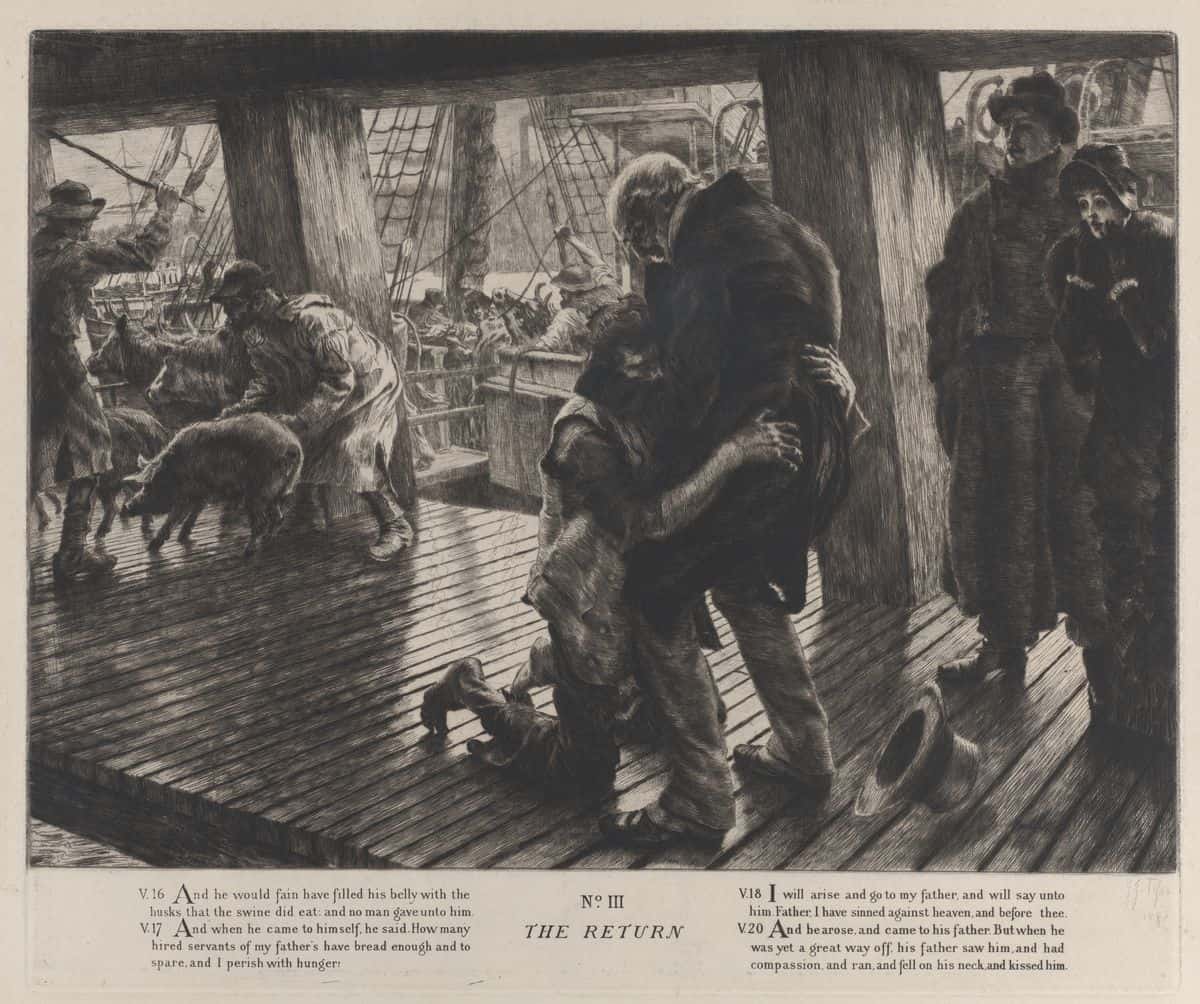
Compassion-Focused Therapy (CFT): History, Process, Benefits, Effectiveness

Acceptance and Commitment Therapy (ACT): Overview and Effectiveness

PTSD in Children

Attachment Theory: Overview and Implications

Breathwork: Science, Types, and Benefits of Breathing Exercises

Child-Parent Psychotherapy: Overview, Benefits, and Effectiveness
Related books & audios.
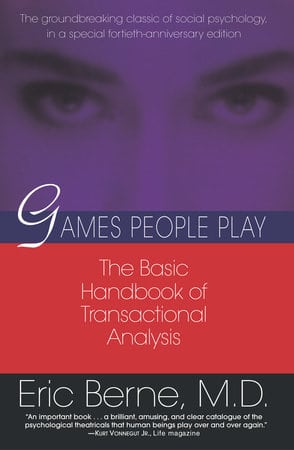
Games People Play
By eric berne, md.
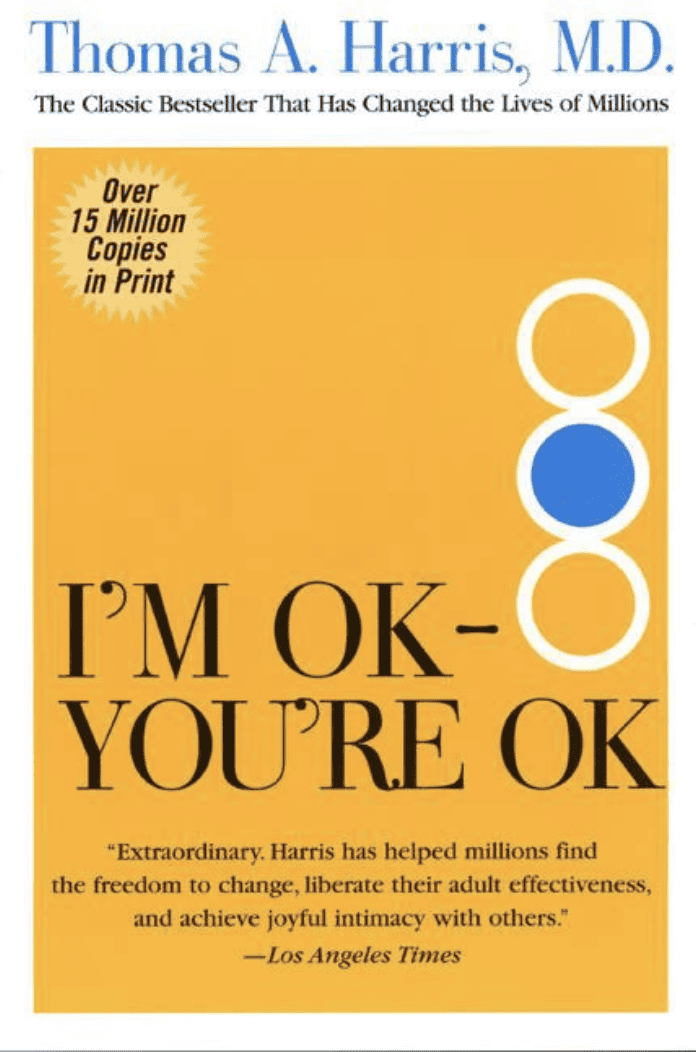
I’m OK–You’re OK
By thomas harris, md.
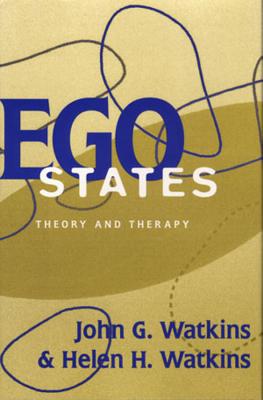
Ego States: Theory and Therapy
By helen h watkins, john g watkins.

Easy Ego State Interventions
By robin shapiro.
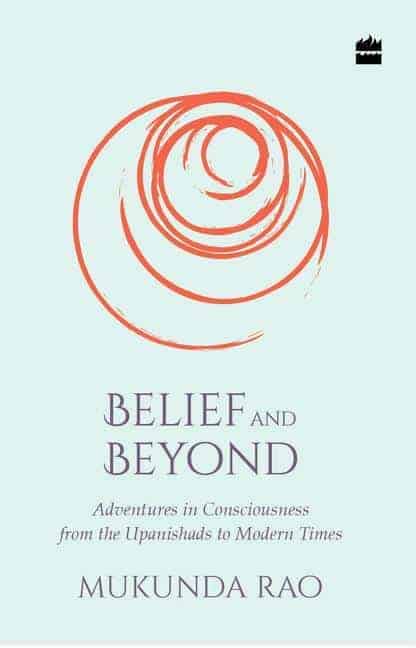
Belief and Beyond
By mukunda rao.

Inner Bonding
By margaret paul.
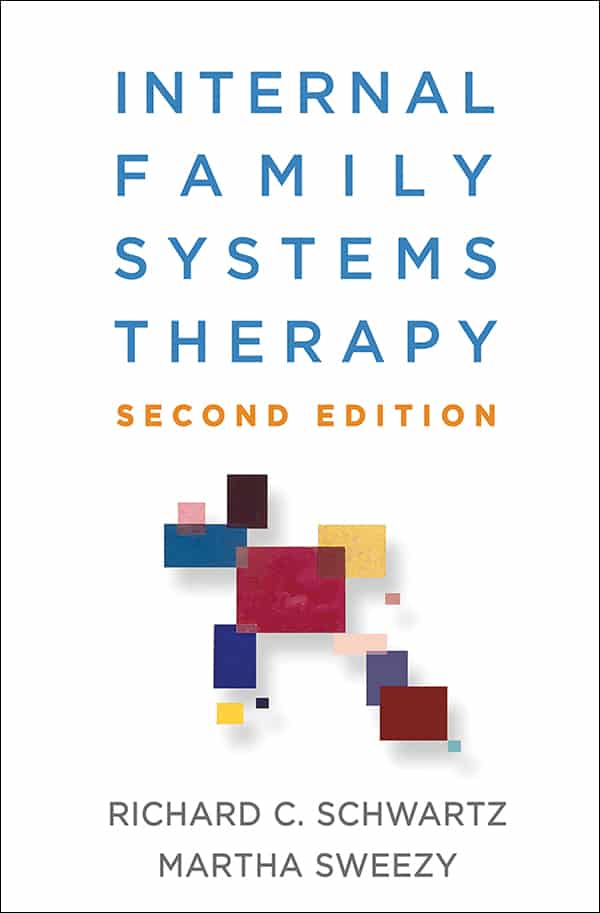
Internal Family Systems Therapy
By richard c. schwartz and martha sweezy.
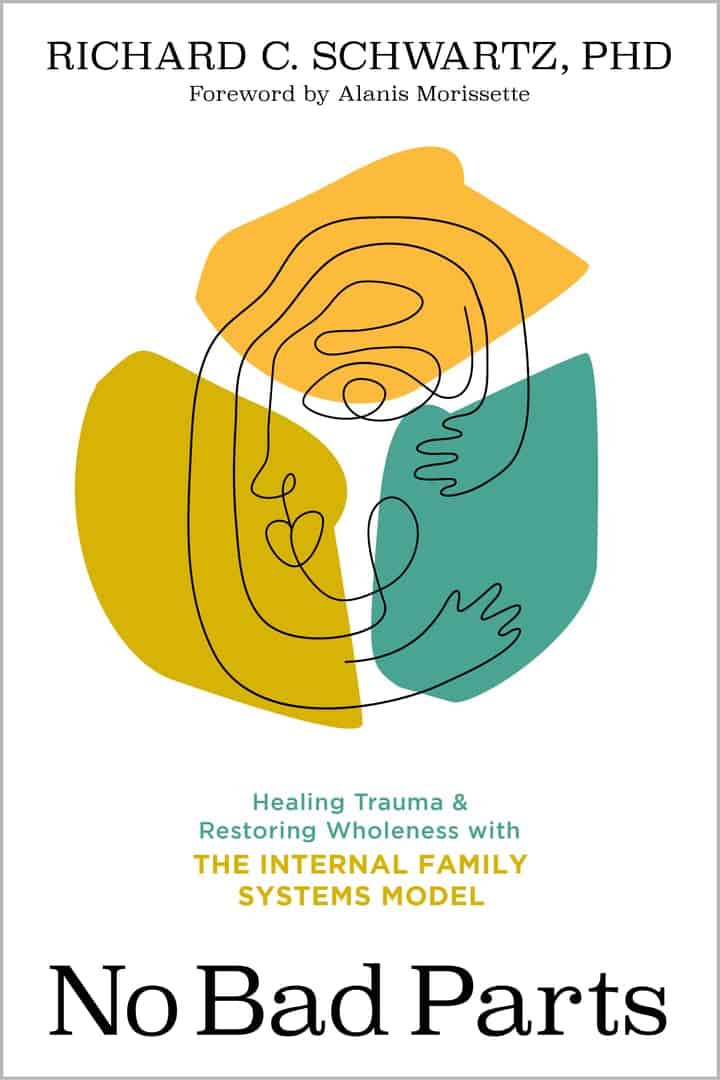

No Bad Parts
By richard c. schwartz.

by John Bradshaw
Explore topics.
- Relationships
- See All Subtopics
- Tic Disorders
- Energy Therapy
- Creative Arts Therapies
- Spirituality
- Mindfulness
- Forgiveness
- Life and Nature
- Philosophy and Thought
- Technology and Society
- Sadness, Grief and Despair
- Generalized Anxiety Disorder (GAD)
- Borderline Personality Disorder (BPD)
- Self-Report Measures, Screenings and Assessments
- Posttraumatic Stress Disorder (PTSD)
- Research Highlights
- Cognitive Behavior Therapy (CBT)
- Dialectical Behavior Therapy (DBT)
- Family Therapy
- Psychotherapy

- Humanness and Emotions
- Mental Health and Conditions
- Mindfulness and Presence
- Spirituality and Faith
Subscribe to our mailing list.
- Research article
- Open access
- Published: 13 January 2020
The effect of transactional analysis on the self-esteem of imprisoned women: a clinical trial
- Mahya Torkaman 1 ,
- Jamileh Farokhzadian 2 ,
- Sakineh Miri ORCID: orcid.org/0000-0003-0785-3666 3 &
- Batool Pouraboli 4
BMC Psychology volume 8 , Article number: 3 ( 2020 ) Cite this article
11k Accesses
6 Citations
4 Altmetric
Metrics details
A Correction to this article was published on 06 February 2020
This article has been updated
The imprisoned women usually have low self-esteem and suffer from various physical and mental complaints; they may suffer from feelings of emptiness, isolation, and depression. Transactional analysis (TA) is part of a comprehensive system attributed to the individual and social psychiatry for personal development of self-esteem among the imprisoned women. Therefore, the present study aimed to investigate the effect of TA group-training on the self-esteem of imprisoned women.
This clinical trial was conducted among the imprisoned women in a prison in Southeastern Iran using pretest-posttest design. In this regard, 76 women were randomly allocated to the intervention ( n = 35) and control ( n = 41) groups. The TA group-training program was held for eight 90-min sessions for the intervention group. Data were collected using a demographic questionnaire and the Rosenberg’s self-esteem scale (RSES). Later, all participants were evaluated before and 1 month after the intervention.
In pre-test, the mean scores of self-esteem were 11.8 ± 4.67 and 7.97 ± 4.52 for the intervention and control groups, respectively. These scores showed low levels of self-esteem and the difference between the two groups was significant ( p = 0.001, t = − 3.61). In the post-test, the mean scores of self-esteem improved to the moderate level (22 ± 2.52) in the intervention group compared to the control group (8.92 ± 4.04). This indicates the significant improvement of self-esteem in the intervention group ( p = 0.001, t = 17.15).
Conclusions
The results showed that TA group-training had a significant effect on self-esteem. Therefore, the experienced and expert counselors and psychologists are recommended to hold transactional analysis group-training courses to enhance self-esteem among women prisoners.
Trial registration
Iranian Registry of Clinical Trials, IRCT20170725035289N5 Date registered: 25/08/2018.
Peer Review reports
Considering the rapid increase in the number of women prisoners, many studies have been conducted to understand their unique needs. The results of these studies showed that the pathway to prison differs between men and women [ 1 ].However, the low number of imprisoned women has led the authorities to neglect the problems and difficulties of these women; so, imprisoned women were put on the second rank of importance [ 2 ]. Women are often integral to families and the community health depends on them to a large degree, but many of them are faced with numerous unsolved problems and conflicts. Consequently, women’s misbehaviors and faults can threaten the stability and firmness of families [ 1 ]. Therefore, the self-confidence and mental aspect of the criminals, especially imprisoned women should be improved, so that they can restart a new and happy life after their imprisonment [ 3 ].
Self-esteem is a psychological concept that refers to an individual’s self-evaluation and indicates the extent to which people evaluate themselves as capable and worthy [ 4 , 5 ]. In other words, self-esteem is defined as individuals’ subjective emotional response towards themselves [ 6 ]. Psychologists usually define self-esteem as an enduring personality characteristic with possibly normal short-term variations. Self-esteem is a concept of personality [ 7 ]. In order to develop self-esteem, a sense of self-worth is required, which is achieved by embracing challenges that result in success [ 8 ].
High or low self-esteem causes numerous positive and negative effects on humans. Individuals with high self-esteem are always dutiful and responsible; such characteristics are created as the consequence of awareness about one’s actions and behaviors [ 9 ]. On the other hand, individuals with low self-esteem ignore their goals much more easily and move through the direction determined by others [ 7 ]. Self-esteem is an important factor for the individual’s progress and success throughout life. Individuals with positive evaluation of their characteristics have different great goals. They are also empowered with more enthusiasm and eagerness to face new successes [ 10 ]. Therefore, individuals’ “self-interpretation and ego state” can be considered as an effective factor in their self-esteem. In this regard, TA is introduced as a useful therapeutic approach for individuals with low self-esteem [ 11 ].
Eric Berne, the founder of TA, indicated that individuals manifest certain sets of thoughts, feelings, and behaviors at different situations [ 12 ]. Berne called these three sets as “Ego States” of Child, Adult, and Parent. Due to the fact that each state of Ego is considered as one of the sub-constructs of ego, each state would be adjusted and adapted if used in an appropriate situation [ 13 ]. Each Ego-state is characterized by a particular set of beliefs, emotions, and behavior responsible for social interactions [ 11 ]. The Ego-Child state is characterized by impulsivity, emotionality, expressivity, irrational behavior, and a self-centered attitude. The Ego-Parent state is characterized by a set of values, norms, orders, prohibitions, and obligations [ 14 ]. The Ego-Adult state is characterized by mostly logical constructive conditioning. This state is responsible for the reality analysis, estimation of the possible solutions, rational decision makings, and assertive relationship of the individual with others [ 15 ]. The literature showed that TA group-training method was an effective method in helping people to communicate and interact with other individuals [ 16 ]. In general, TA has been used to increase self-esteem [ 11 ], help anxious and abused women [ 17 ], and treat personality disorders [ 14 ]. Furthermore, it has been widely applied in clinical and therapeutic affairs [ 15 ], developmental psychology [ 18 ], and management communication of personality, behaviors, and relationships [ 15 , 16 , 19 ]. Although TA is one of the most effective psychological theories, it has not been considered much by the researchers [ 18 ]. Techniques of TA were designed to promote the independence and self-direction using one’s knowledge, self-motivation, and resources as an adult to solve problems [ 16 , 20 ]. The effectiveness of TA training on self-esteem was confirmed in some studies [ 15 ]. In Yugoslavia, a study over the alcohol and non-alcohol addicts indicated that the TA group-training had a positive effect on the psycho-emotional state of the alcohol addicts [ 14 ]. A research in Iran showed that addicted women had a low level of self-esteem, which hindered them from changes and reforms in life. The findings of the mentioned study recommended TA to improve self-esteem of the addicted imprisoned women [ 6 ]. Another study in Iran was carried out by Forghani et al. They reported that TA had a significant impact on the addicts and prevented addiction recurrence by enhancing the participants’ coping skills and mental functions [ 21 ].
The studies mentioned above were conducted to investigate the effect of TA on the self-esteem or other psychological characteristics of individuals. Women, as the main members of the society and family, have been neglected most of the time. To the best of our knowledge, the effect of TA group-training on the self-esteem of Iranian imprisoned women has not been investigated. Therefore, the present study was conducted to deal with the issue.
Study design & setting
This pretest-posttest randomized clinical trial was conducted in the Southeast of Iran. In the prisons of Iran, monitored by the prison-related organizations of each province, different specialists work, such as psychologists and psychiatrists to help the prisoners. Sports classes are also held by the authorities. According to the rules, imprisoned women can meet their families on certain days of week and in some crimes, they can have some leaves per in the month.
The target population of this study included al the imprisoned women at the time of data collection ( N = 120). The study participants were 84 imprisoned women selected according to the inclusion criteria. The participants were randomly allocated to the intervention and control groups (42 participants in each group). The inclusion criteria of this study recruited the prisoners who were in prison for at least 6 months, whose jail sentences were up to the end of study, and who had at least elementary education. The exclusion criteria consisted of failure to complete the questionnaires due to any reasons and failure to attend the training sessions for more than one session. In total, 35 questionnaires in the intervention and 41 questionnaires in the control groups were collected and analyzed.
Instrument and data collection
Data were collected using two questionnaires. The first one was a demographic questionnaire and the second one was the 10-item Rosenberg Self-Esteem Scale (RSES) developed in 1965. This scale evaluates the individual’s overall self-image. Each item in RSES is scored based on a four-point Likert scale including ‘totally agree’ (3 scores), ‘agree’ (2 scores), ‘disagree’ (1 score), and ‘totally disagree’ (0 score). The negative items (items from 6 to 10) were scored inversely. In RSES, higher scores indicate higher self-esteem levels and the attainable scores range from zero to 30. Additionally, low, moderate, and high levels of self-esteem are indicated by scores lower than 15, 15–25, and higher than 25, respectively. The Cronbach’s alpha for the original scale was measured as 74% [ 22 , 23 ] (Additional file 1 ). In a study by Rajabi et al., the internal consistency coefficient of the Persian version of the scale was calculated as 84% for the entire sample of students, 87% for the male students, and 80% for the female students. The correlation coefficients between the score of each item and the total score varied from 56 to 72%, which were significant at P < 0.001. The construct validity of the scale was measured using factor analysis. Moreover, a negative and significant relationship was observed between this scale and the Death Obsession Scale (DOS) with a coefficient of − 0.34 for the entire sample, − 0.44 for the male students, and − 0.27 for the female students. This suggests the good validity of the Rosenberg’s Self-Esteem Scale [ 24 ].
Intervention procedure
Initially, the experimental group was divided into three sub-groups (14 participants in each). Then, sub-each group attended the TA training program in eight 90-min sessions weekly. The TA trainings were presented by the first researcher, a psychologist, a nursing PhD, and a psychiatric nurse using educational slides, lectures, group discussions, as well as questions and answers. The control group received no training during the study period. Table 1 represents the topics presented during the training sessions [ 25 ].
Statistical analysis
Data were analyzed using SPSS (version 20) and by running descriptive (percentage, mean, and standard deviation) and analytical statistics (chi-squared test, independent samples t -test, and paired-samples t -test and ANCOVA). According to the results of Kolmogorov-Smirnov test, data enjoyed a normal distribution. The level of significance was set at P ≤ 0.05.
Demographic information
The results showed that the majority of participants were housewives in the age range of 21–40 years and experienced their first prison sentence. Most participants had elementary education, were married, and were prisoned for 3 years. According to the chi-squared test, no significant difference was observed between the intervention and control groups in terms of the demographic information (Table 2 ).
Self esteem
In the pre-test stage, the mean score of self-esteem in the intervention group (11.8 ± 4.67) was higher than that of the control group (7.97 ± 4.52) and the difference between the two groups was significant ( p = 0.001, t = −3.61). However, the results showed that the level of self-esteem was low for both groups. In the post-test stage, the mean score of self-esteem in the intervention group (22 ± 2.52) was significantly higher than that of the control group (8.92 ± 4.04) ( p = 0.001, t = 17.15). In other words, the intervention group members were at the low level of self-esteem prior to the intervention, but after attending the educational classes, their self-esteem increased into the moderate level, which indicates the significant effect of the intervention (Table 3 ).
The covariance analysis test to control the impact of pretest on the self-esteem of women prisoners are presented in Table 4 . These results confirmed the results in Table 3 .
The purpose of this study was to investigate the effect of TA group-training on the self-esteem of imprisoned women. The results showed that the majority of female prisoners were at low levels of self-esteem before implementing the group-training program, which is consistent with the findings of many studies.
For example, a study among the addicted female prisoners in South of Iran represented that most prisoners had low self-esteem [ 6 ]. Arefi reported that female prisoners, especially those with commission crimes, had low self-esteem [ 26 ].The similarity of these results with those of the present study can be due to the same research population and data collection tools.
Furthermore, a reason for the low level of self-esteem among the imprisoned women can be attributed to the prison conditions and environment. In addition, the prisoners’ isolation and being away from their families, fear of rejection in society, and lack of social protection during and after their sentence are among some other effective factors. Alavi showed that Iranian female prisoners had a moderate level of self-esteem. Alavi also introduced low self-esteem as a predictive factor of drug abuse, robbery, and prostitution [ 27 ]. Moreover, Kamoyo reported that self-esteem was at a moderate level among the Kenyan female prisoners [ 28 ]. The discrepancy between results of the above-mentioned studies and the present study can be probably due to the different cultures of various societies in accepting women, especially female prisoners as well as the different data collection tools.
Results of our study indicated that TA group-training significantly improved the self-esteem of intervention group from the “low” level to the “moderate” Level. Unfortunately, no published study has ever examined the effect of TA group-training as a strategy to improve self-esteem and psychological well-being of the imprisoned women with mental health issues.
Other studies reported TA as an effective reconsideration method in life, which helps the individuals to feel valuable and solve their problems successfully [ 16 , 17 , 29 ]. Another study on the impact of TA group-training indicated improvement of the self-confidence and the ability to endure failures [ 18 ] among members of the intervention group. In several studies, participants reported more success in family life and social relationships [ 19 ], reduced mental and psychological stresses [ 30 ], increased self-esteem, better control of personal conflicts, and more decisiveness in achieving the goals and ideals [ 31 ].The results of a study by Riaz et al. showed that cognitive behavioral therapy (CBT) group programs increased the prisoners’ self-acceptance and self-admission and reduced their risky behaviors [ 32 ].Furthermore, Khodayarifard et al. conducted the individual and group (combined) cognitive–behavioral interventions and showed improvement in the psychological well-being of the prisoners. Finally, they concluded that these strategies increased the female prisoners’ self-efficacy and self-esteem [ 3 ].Perhaps, the similarity between the results of these studies can be due to similar intervention methodology and participation in the group discussion. In group therapy sessions, participants are exposed to other participants’ experiences and contributions. Therefore, they start to analyze and scrutinize their own problems. In addition, the inmates can benefit from other individuals’ opinions and discuss about their problems.
We also found that the imprisoned women in Iran were highly aware of their own low self-esteem and had a tendency to express it through avoidance behaviors. These participants used more emotion-focused than problem-focused coping strategies to overcome their low self-esteem (e.g., active coping, planning, and instrumental support).
Considering that female prisoners in Iran suffer from low self-esteem, which leads into their avoidance behaviors, special group programs, such as TA trainings should be conducted for them by specialties. Consequently, the female prisoners can adapt themselves to the conditions in the community and return to their families by self-acceptance and self-admission.
Our study had a number of limitations. First, the imprisoned women had short-term leaves, family visits, communication with counselors, clinical psychologists, and social workers in prison. These factors could affect the results, but were out-of-control. Second, we could not find a precise instrument to assess the self-esteem of the imprisoned women, therefore, RSES was used. Third, the researchers had access to the prisoners for only 3 months and could conduct only one follow-up 1 month after theintervention. One month is a very short period to assess the impact of TA on a complex behavior such as self-estem. Fourth, the therapist was not permitted to conduct the therapeutic sessions in a separate room. The only available space was a room next to the jailer’s office. Furthermore, some security staff attended the ongoing sessions. These factors disturbed the privacy of the intervention group. Fifth, the results might have changed in the case that the control group received some kinds of training, such as strengthening the back muscles or excersizing. Sixth, since the differnce between the two groups was significant at the pre-test with regard to the self-esteem scores, future researchers are recommneded to select participants based on their pre-test mean scores of self-esteem, instead of a random allocation to the intervention and control groups. In this way, both groups would have women with comparable mean scores.
Therefore, further research are suggested using a valid and reliable tool to assess the self-esteem of the imprisoned women. Moreover, longitudinal studies should be conducted bycontroling the confounding variables.
Results of the present study showed that TA had a significantly positive effect on the imprisoned women in the intervention group. Therefore, prison managers are recommended to conduct TA group-trainings with the help of psychologists and psychiatric nurses to strengthen self-esteem of the imprisoned women.
Rehabilitative programmers are also suggested to employ the self-esteem strategy in prisons to improve the prisoners’ self-esteem. Furthermore, the prison environment should be modified to allow for more frequent presence of social support groups. In this regard, we recommend other researchers to carry out quantitative and qualitative studies on the effective strategies to overcome the barriers against self-esteem among female prisoners. Future studies can also examine the effect of TA group-training on other psychological aspects of the imprisoned women in various cultures and contexts.
Availability of data and materials
The datasets generated and analysed in the present study, are available upon request to the corresponding author after signing appropriate documents in line with ethical application and the decision of the Ethics Committee.
Change history
06 february 2020.
Following publication of the original article [1], the authors advised that the name of the 4 th author had been submitted incorrectly; the author has the family name ‘Pouraboli’, however, their article was originally published with the family name (mis) spelled as ‘Pouraboili’.
Abbreviations
Rosenberg’s self-esteem scale
- Transactional analysis
Fajarwatia A, Tyas Wulan Meia E, Hasanatia S, Saria IM. The productive and reproductive activities of women as form of adaptation and post-disaster livelihood strategies in Huntap Kuwang and Huntap Plosokerep. Soc Behav Sci. 2016;227:370–7.
Article Google Scholar
Heras Santos JL. Women’s reformatories and prisons in the early modern age: morality, welfare and repression of women in the 17th and 18th century. Soc Behav Sci. 2014;161:176–83.
Khodayarifard M, Shokoohi-Yekta M, Hamot G. Effects of Individual and Group Cognitive-Behavioral Therapy for Male Prisoners in Iran, vol. 54; 2009.
Google Scholar
Ticusan M. Low self-esteem, premise of depression appearance at adolescents. Soc Behav Sci. 2012;69:1590–3.
Phillips D, Hagan T, Bodfield E, Woodthorpe K, Grimsley M. Exploring the impact of group work and mentoring for multiple heritage children’s self-esteem, well-being and behaviour. Health Soc Care Community. 2008;16(3):310–21.
Article PubMed Google Scholar
Torkaman M, Miri S, Farokhzadian J. Relationship between adaptation and self-esteem in addicted female prisoners in the south east of Iran. Int J Adolesc Med and Health. 2018. https://doi.org/10.1515/ijamh-2017-0168 . [Epub ahead of print]. Retrieved January 7, 2020, from https://www.ncbi.nlm.nih.gov .
Liu JY, Yang JP, Yang Y, Liu YH. The relationships among perceived organizational support, intention to remain, career success and self-esteem in Chinese male nurses. Int J Nursing Sci. 2015;2:389–93.
Ghasimbaklo U, Mohammadyari G, Mahmodzadeh M, Mohammadzadeghan R, Mokhtari M. The relationship of social support and self-esteem with recidivism among prisoners. J Res Health. 2014;4:818–26.
Maltesea A, Alesia M, Giuseppa A. Self-esteem, defensive strategies and social intelligence in the adolescence. Soc Behav Sci. 2012;69:2054–60.
Liu H, Zhang X, Chang R, Wang W. A research regarding the relationship among intensive care nurses’ self-esteem, jobsatisfaction and subjective well-being. Int J Nursing Sci. 2017;4(3):291–5.
Bąk-Sosnowska M, Naworska B, Owczarek A, et al. Coping with overweight strategies, self-esteem and body-esteem in the context of transactional analysis. Psychiatr Pol. 2014;48(3):477–87.
PubMed Google Scholar
Ciucur D. The Ego states and the “big five” personality factors. Soc Behav Sci. 2012;78:581–5.
Nayeria A, Lotfib M, Noorani M. The effectiveness of group training of transactional analysis on intimacy in couples. Soc Behav Sci. 2014;152:1167–70.
Hadži-Pešica M, Mitrovica M, Brajovic Carb K, Stojanovic D. Personality of alcohol addict according to the theory of transactional analysis. Soc Behav Sci. 2014;127:230–4.
Yonder Ertem M, Kececi A. Ego states of nurses working in psychiatric clinics according to transactional analysis theory. Pak J Med Sci. 2016;32(2):485–90.
Temple S. Celebrating functional fluency and its contribution to transactional analysis theory. Trans Anal J. 2015;45(1):10–22.
Widdowson M. Transactional analysis psychotherapy for a case of mixed anxiety & depression: a pragmatic adjudicated case study – ‘Alastair. Int J Transact Anal Res. 2014;5(2):66–76.
Ciucur D. A transactional analysis group psychotherapy Programme for improving the qualities and abilities of future psychologists. Soc Behav Sci. 2013;78:576–80.
Kovacevic I, Panic B, Vujosevic M, Kuzmanovic M. Application of transactional analysis in bullwhip effect analysis. Amfiteatru Econ. 2013;33:210–23.
Beekum SV. A new formulation of transactional analysis theory in the field of organizations. Sage J. 2015;45(3):167–78.
Forghani M, Abadi BAGH. The Effect of Group Therapy With Transactional Analysis Approach on Emotional Intelligence, Executive Functions and Drug Dependency. Iran J Psychiatry Behav Sci. 2016;10(2):e2423.
Ramiro MT, Teva I, Bermúdez MP, Buela-Casal G. Social support, self-esteem and depression: relationship with risk for sexually transmitted infections/HIV transmission. Int J Clin Health Psychol. 2013;13(3):181–8.
Rosenberg M. Society and the adolescent self-image. New Jersey: Princeton University Press; 2015. Retrieved January 7, 2020, from https://press.princeton.edu .
Rajabi G, Bohlol N. Assess the reliability and validity of self-esteem in students' Vznbrg in the first year should be Chamran University. Psychol Educ Res. 2008;3(2):33–48 [in persian].
Kafi M, Melazadeh Esfandiani R, Noori Khajavi M, Salehi I. Effectiveness of group therapy by cross-sectional analysis method on marital adjustment and prevention of recurrence of detoxified persons. New Psychol Res. 2011;6(23):111–32 (Psychology, University of Tabriz) [in persian].
Arefi M. The comparison of psychological factors (locus of control, self-esteem, and personality disorders) between normal and prisoner women with emphasis on prostitute women. J Psychol Stud. 2010;6(4):125–46.
Alavi HR. The role of self-esteem in tendency towards drugs, theft and prostitution. Addict Health. 2011;3(3–4):119–24.
PubMed Central PubMed Google Scholar
Kamoyo J. Effects of Imprisonment on Self-Esteem Among Female Inmates in Selected Prisons in Kenya. Eur Sci J. 2018;14(17):165.
Ciucur D, Pîrvuţ AF. The effects of a transactional analysis training programme on team leadership factors in automotive industry. Procedia Soc Behav Sci. 2012;33:667–71.
Widdowson M. TA treatment of depression - a hermeneutic single-case efficacy design study - ‘Denise’. Int J Transact Anal Res. 2012;3(2):3–14.
Neac u V. The Efficiency of a Cognitive-Behavioral Program in Diminishing the Intensity of Reactions to Stressful Events and Increasing Self-Esteem and Self-Efficiency in the Adult Population. Soc Behav Sci. 2013;78:380–4.
Riaz R, Agha S. Efficacy of cognitive behavior therapy with deliberate self-harm in incarcerated women. Pak J Psychol Res. 2011;27(1):21–35.
Download references
Acknowledgments
The authors appreciate the prison officials and all women who participated in this study. We also appreciate Mrs. Chakameh Navard and Mr. Fathi, the clinical psychologists, who cooperated with us during this study.
This research received no specific grant from any funding agencies in the public, commercial, or not-for-profit sectors.
Author information
Authors and affiliations.
Student Research Committee, Department of Nursing, School of Nursing and Midwifery, Shiraz University of Medical Sciences , Shiraz, Iran
Mahya Torkaman
Nursing Research Center, Kerman University of Medical Sciences, Kerman, Iran
Jamileh Farokhzadian
Department of Psychiatric Nursing, School of Nursing and Midwifery, Kerman University of Medical Sciences, Haft-Bagh Highway, PO Box: 7716913555, Kerman, Iran
Sakineh Miri
Department of pediatric and neonatal nursing, School of Nursing and Midwifery, Tehran University of Medical Sciences, Tehran, Iran
Batool Pouraboli
You can also search for this author in PubMed Google Scholar
Contributions
MT, SM, JF, and BP contributed in the research design. The data were collected, analyzed, and interpreted by MT and JF. MT organized the group training. MT, SM, JF, and BP contributed equally in composing and approving the final manuscript. All authors read and approve the final version of this manuscript.
Corresponding author
Correspondence to Sakineh Miri .
Ethics declarations
Ethics approval and consent to participate.
The present research was conducted after obtaining the ethical code (IR.KMU.REC.1395.1670) from the Ethics Committee of Kerman University of Medical Sciences and the clinical trial code (IRCT20170725035289N5) from Iranian Registry of Clinical Trials (IRCT). In order to conduct the study, the first researcher presented an introduction letter to make the necessary coordination with the prison authorities. Later, written consent forms were obtained from the authorities. Prior to data collection, the included participants were provided with a cover letter explaining the purpose of the study and the procedure of data collection. Then, written consent forms were obtained from the participants and they were ensured about confidentiality and anonymity of the data. They were also explained about voluntary participation in the study.
Consent for publication
Not applicable.
Competing interests
The authors declare that they have no competing interests.
Additional information
Publisher’s note.
Springer Nature remains neutral with regard to jurisdictional claims in published maps and institutional affiliations.
The original version of this article was revised to correct an error in the spelling of an author name.
Supplementary information
Additional file 1..
Rosenberg Self-Esteem Scale
Rights and permissions
Open Access This article is distributed under the terms of the Creative Commons Attribution 4.0 International License ( http://creativecommons.org/licenses/by/4.0/ ), which permits unrestricted use, distribution, and reproduction in any medium, provided you give appropriate credit to the original author(s) and the source, provide a link to the Creative Commons license, and indicate if changes were made. The Creative Commons Public Domain Dedication waiver ( http://creativecommons.org/publicdomain/zero/1.0/ ) applies to the data made available in this article, unless otherwise stated.
Reprints and permissions
About this article
Cite this article.
Torkaman, M., Farokhzadian, J., Miri, S. et al. The effect of transactional analysis on the self-esteem of imprisoned women: a clinical trial. BMC Psychol 8 , 3 (2020). https://doi.org/10.1186/s40359-019-0369-x
Download citation
Received : 30 March 2019
Accepted : 24 December 2019
Published : 13 January 2020
DOI : https://doi.org/10.1186/s40359-019-0369-x
Share this article
Anyone you share the following link with will be able to read this content:
Sorry, a shareable link is not currently available for this article.
Provided by the Springer Nature SharedIt content-sharing initiative
- Group training
- Self-esteem
- Imprisoned women
BMC Psychology
ISSN: 2050-7283
- General enquiries: [email protected]
Case Study Research Methodology
Article sidebar, main article content.
Commenting on the lack of case studies published in modern psychotherapy publications, the author reviews the strengths of case study methodology and responds to common criticisms, before providing a summary of types of case studies including clinical, experimental and naturalistic. Suggestions are included for developing systematic case studies and brief descriptions are given of a range of research resources relating to outcome and process measures. Examples of a pragmatic case study design and a hermeneutic single-case efficacy design are given and the paper concludes with some ethical considerations and an exhortation to the TA community to engage more widely in case study research.
Article Details

The work in this journal is licensed under Creative Commons Attribution 4.0 International License .
Authors who publish with this journal agree to the following terms:
Authors retain copyright and grant the journal right of first publication with the work simultaneously licensed under a Creative Commons Attribution License that allows others to share the work with an acknowledgement of the work's authorship and initial publication in this journal.
Authors are able to enter into separate, additional contractual arrangements for the non-exclusive distribution of the journal's published version of the work (e.g., post it to an institutional repository or publish it in a book), with an acknowledgement of its initial publication in this journal.
Authors are permitted and encouraged to post their work online (e.g., in institutional repositories or on their website) prior to and during the submission process, as it can lead to productive exchanges, as well as earlier and greater citation of published work (See The Effect of Open Access).
Most read articles by the same author(s)
- Mark Widdowson, Transactional Analysis Psychotherapy for a Case of Mixed Anxiety & Depression: A Pragmatic Adjudicated Case Study – ‘Alastair’ , International Journal of Transactional Analysis Research & Practice: Vol. 5 No. 2 (2014): International Journal of Transactional Analysis Research
- David Harford, Mark Widdowson, Quantitative and Qualitative Outcomes of Transactional Analysis Psychotherapy with Male Armed Forces Veterans in the UK presenting with Post-Traumatic Stress Disorder , International Journal of Transactional Analysis Research & Practice: Vol. 5 No. 2 (2014): International Journal of Transactional Analysis Research
- Claire Bowers, Mark Widdowson, Transactional Analysis Psychotherapy with Clients who are Neurodivergent: Experiences and Practice Recommendations , International Journal of Transactional Analysis Research & Practice: Vol. 14 No. 1 (2023): International Journal of Transactional Analysis Research & Practice
- Enrico Benelli, Emanuela Moretti, Giorgio Cristiano Cavallero, Giovanni Greco, Vincenzo Calvo, Stefania Mannarini, Arianna Palmieri, Mark Widdowson, TA Treatment of Depression: A Hermeneutic Single-Case Efficacy Design Study - ‘Anna’ , International Journal of Transactional Analysis Research & Practice: Vol. 8 No. 1 (2017): International Journal of Transactional Analysis Research
- Enrico Benelli, Maddalena Bergamaschi, Cristina Capoferri, Stefano Morena, Vincenzo Calvo, Stefania Mannarini, Arianna Palmieri, Mariavittoria Zanchetta, Maria Spinelli, Mark Widdowson, TA Treatment of Depression: A Hermeneutic Single-Case Efficacy Design Study - ‘Deborah’ , International Journal of Transactional Analysis Research & Practice: Vol. 8 No. 1 (2017): International Journal of Transactional Analysis Research
- Mark Widdowson, Peter Theuns, Mil Rosseau, Rik Rosseau, Impact of the Application of Redecision Methods in Executive Coaching Workshops on Psychological Wellbeing: a Quantitative Evaluation of Effectiveness , International Journal of Transactional Analysis Research & Practice: Vol. 7 No. 2 (2016): International Journal of Transactional Analysis Research
- Mark Widdowson, TA Treatment of Depression: A Hermeneutic Single-Case Efficacy Design Study - ‘Linda’ - a mixed outcome case , International Journal of Transactional Analysis Research & Practice: Vol. 4 No. 2 (2013): International Journal of Transactional Analysis Research
- Enrico Benelli, Desiree Boschetti, Cristina Piccirillo, Laura Quagliotti, Vincenzo Calvo, Arianna Palmieri, Marco Sambin, Mark Widdowson, TA Treatment of Depression: A Hermeneutic Single-Case Efficacy Design Study - ‘Luisa’ , International Journal of Transactional Analysis Research & Practice: Vol. 7 No. 1 (2016): International Journal of Transactional Analysis Research
- Enrico Benelli, Sara Filanti, Roberta Musso, Vincenzo Calvo, Stefania Mannarini, Arianna Palmieri, Mark Widdowson, TA Treatment of Depression: A Hermeneutic Single-Case Efficacy Design Study - ‘Caterina’ , International Journal of Transactional Analysis Research & Practice: Vol. 8 No. 1 (2017): International Journal of Transactional Analysis Research
- Enrico Benelli, Francesco Scottà, Serena Barreca, Arianna Palmieri, Vincenzo Calvo, Guido de Rénoche, Stefano Colussi, Marco Sambin, Mark Widdowson, TA Treatment of Depression: A Hermeneutic Single-Case Efficacy Design Study - ‘Penelope’ , International Journal of Transactional Analysis Research & Practice: Vol. 7 No. 1 (2016): International Journal of Transactional Analysis Research

IMAGES
VIDEO
COMMENTS
T1 - Transactional analysis in organisations. T2 - A case study with a focus on internal communication. AU - Wuersch, Lucia. PY - 2020. Y1 - 2020. N2 - Internal communication, embracing both technical and human organisational aspects, is an important function for organisational success.
Transactional analysis was developed by Eric Berne, a Canadian psychiatrist and psychoanalyst, during the 1960s. Berne referred to the basic unit of social interaction as a transaction. TA refers to the study of how individuals interact in social situations. Berne was influenced by empiricism, phenomenology, existentialism, and humanism. 3.
This case study describes a transactional analysis model based on the strain of a single mother with an adult son suffering from bipolar I disorder. The study examines interaction patterns within the clinical setting; the therapeutic view examines contextual factors that affect this mother and her adult son through assessment and recovery with ...
Abstract. This paper presents the findings of a case study on the use of Transactional Analysis (TA) in schools in England. The paper gives a brief overview of TA and its relevance to secondary education - for pupils, teachers and school improvement. TA is a field of psychology that looks at the 'transactions' that go on between people ...
Transactional Analysis Journal. 14 (2) 120-123 Ohlsson, Thomas (2010) Scientific Evidence Base for Transactional Analysis in the Year 2010 International Journal of Transactional Analysis Research 1:1 4-29 Salole, Roy M. (2001) Case Formulations: Comparison of Transactional Analysis Script Analysis and the Patient's Plan Diagnosis Method.
Widdowson M. Transactional analysis psychotherapy for a case of mixed anxiety & depression: a pragmatic adjudicated case study - 'Alastair. Int J Transact Anal Res. 2014;5(2):66-76. Google Scholar Ciucur D. A transactional analysis group psychotherapy Programme for improving the qualities and abilities of future psychologists.
Most read articles by the same author(s) Mark Widdowson, Transactional Analysis Psychotherapy for a Case of Mixed Anxiety & Depression: A Pragmatic Adjudicated Case Study - 'Alastair' , International Journal of Transactional Analysis Research & Practice: Vol. 5 No. 2 (2014): International Journal of Transactional Analysis Research
Julia McLeod, BA, MSc, is an accredited transactional analysis practitioner (ITA registered) in private practice and a lecturer in counseling in the School of Social and Health Sciences, University of Abertay, Dundee, Scotland.The coauthor of Counselling Skills: A Practical Guide for Counsellors and Health Professionals (Open University Press, 2011), her research is concerned with exploring ...
This article presents a detailed case study of a single transactional analysis consultation session based on the supervisory processes first described by Eric Berne (1968/1977) and John O'Hearne (1972). The consultation process included the client directly in discussion about the ongoing therapy, including its successes and points of impasse.
Intensive Transactional Analysis Psychotherapy (ITAP) is a new therapeutic approach based on the integration of Transactional Analysis and brief psychodynamic approaches. ITAP is based on two key therapeutic tools—the intrapsychic triangle and the interpersonal triangle—which the therapist uses to focus patients' attention on moment-by ...